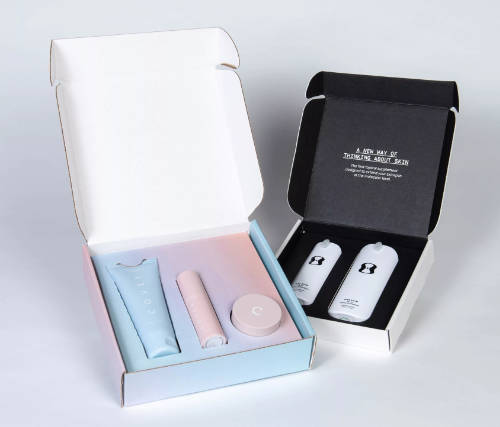There are many different definitions and applications for intentional design. It may be the new trend or buzz word others are just discovering but we at Salazar Packaging have been practicing it since we opened our doors in 2007.
What is intentional design?
Synonyms for the word “intentional” include deliberate, planned, intended, and my personal favorite, purposeful. Our approach to intentional design is that everything we do in the design phase serves a purpose, if not, why include it.
That purpose may be purely esthetic, or it may be totally functional as in applications where containment and protection of the products or components is essential. Everything is where it is to serve a specific purpose. We believe this can be accomplished at minimal cost, using the least amount of packaging materials making the design as green as possible. As one of the leading national producers of e-commerce boxes and inserts we prove that on a daily basis.
Void fill is out, contain and display are in!
 In the early days of direct to consumer (DTC) shipping, void fill was a popular way to protect the products being shipped and was often used to also help “decorate” and create what was then referred to as the “Wow Factor.” Brightly printed shredded materials or tissue paper were often used adding color and a little pizazz, though that ancillary packaging often hid the product being shipped.
In the early days of direct to consumer (DTC) shipping, void fill was a popular way to protect the products being shipped and was often used to also help “decorate” and create what was then referred to as the “Wow Factor.” Brightly printed shredded materials or tissue paper were often used adding color and a little pizazz, though that ancillary packaging often hid the product being shipped.
Packer/fulfillment operations hated using void fill, especially loose fill, it was time consuming and messy to work with, so they usually increased their per order price to clients like you. To make matters worse, some packaging products “settled,” falling to the bottom of the shipping box, failing to protect the products being shipped. Sheeted or rolled products like bubble and foam are typically expensive and not very eco-friendly. Most web-based sellers want their products not the packaging to be the first thing their customers see when opening the package.
We were quick to recognize the benefits of corrugated inserts to not only hold products and components where you want them, but also to display them as you want them shown. In other words, items are contained, and immobilized intentionally.
Custom packaging is less costly than you think!
All too often, people avoid “custom” packaging because they believe it is costly and requires expensive tooling and design time. The fact is custom packaging cost is determined by type of packaging, the specific design required and of course, volume. We have scores of standard, inexpensive designs including dividers and partitions, which require no design time and are available in a low 1,000 MOQ.
Does intentional design conflict with the unboxing experience?
No, not at all. To the contrary, if everything is where it belongs and where you want the consumer to find it, nothing can possibly be cleaner, or simpler. The unboxing experience is about your company and your product, NOT about our packaging design. If we do our job well, our packaging is almost unnoticed and actually enhances your product presentation. However, it never takes the focus from the real star of the show which is the item(s) they ordered from you.
Whether your product is an electronics kit, personal care items, or a set of glass bottles, chances are we have already successfully handled an application like yours. We know how to make sure the products arrive safely while looking great. Check out our gallery and the related posts below to see an incredibly wide selection of applications we have completed.
Contact us if you have any questions or call us at 630-551-1700 to discuss your specific product and application. There is no cost or obligation for an initial consultation, but we are confident once you see the creativity and quality of our work, as well as the experience we have in e-commerce, you will know who to trust.
Related posts:
https://www.salazarpackaging.com/faq-dtc-internal-packaging-for-shipping-boxes/
https://www.salazarpackaging.com/glass-product-packaging-for-e-commerce-nobody-does-it-better/



